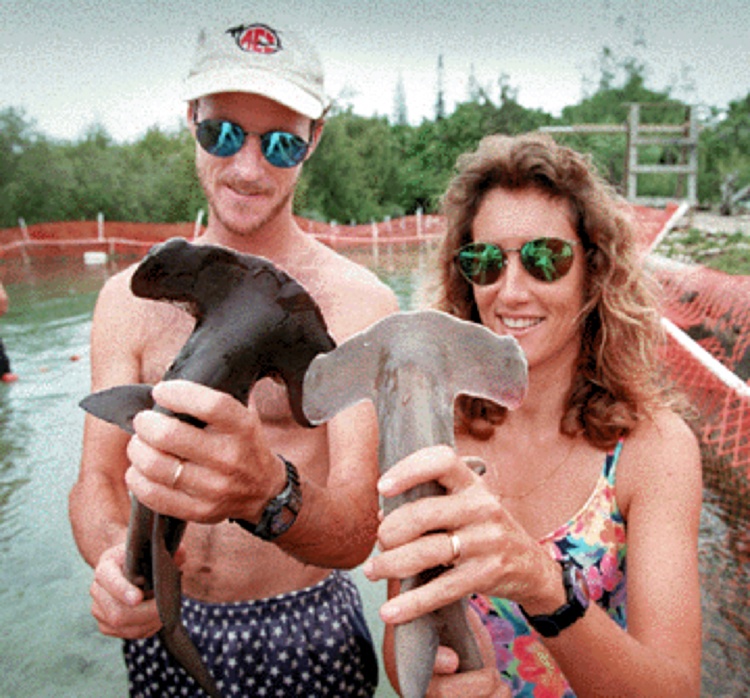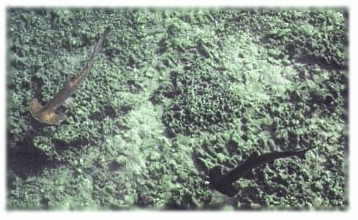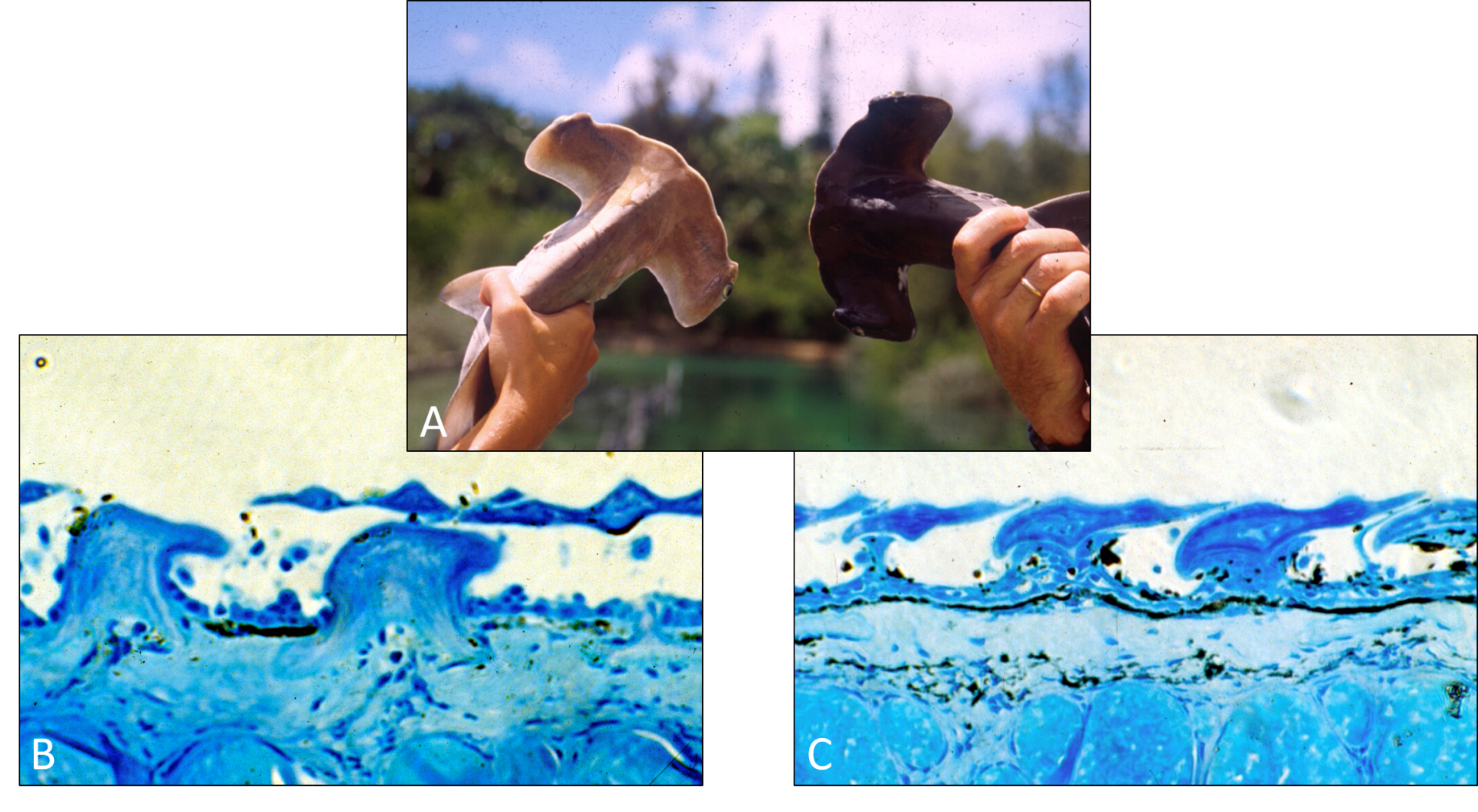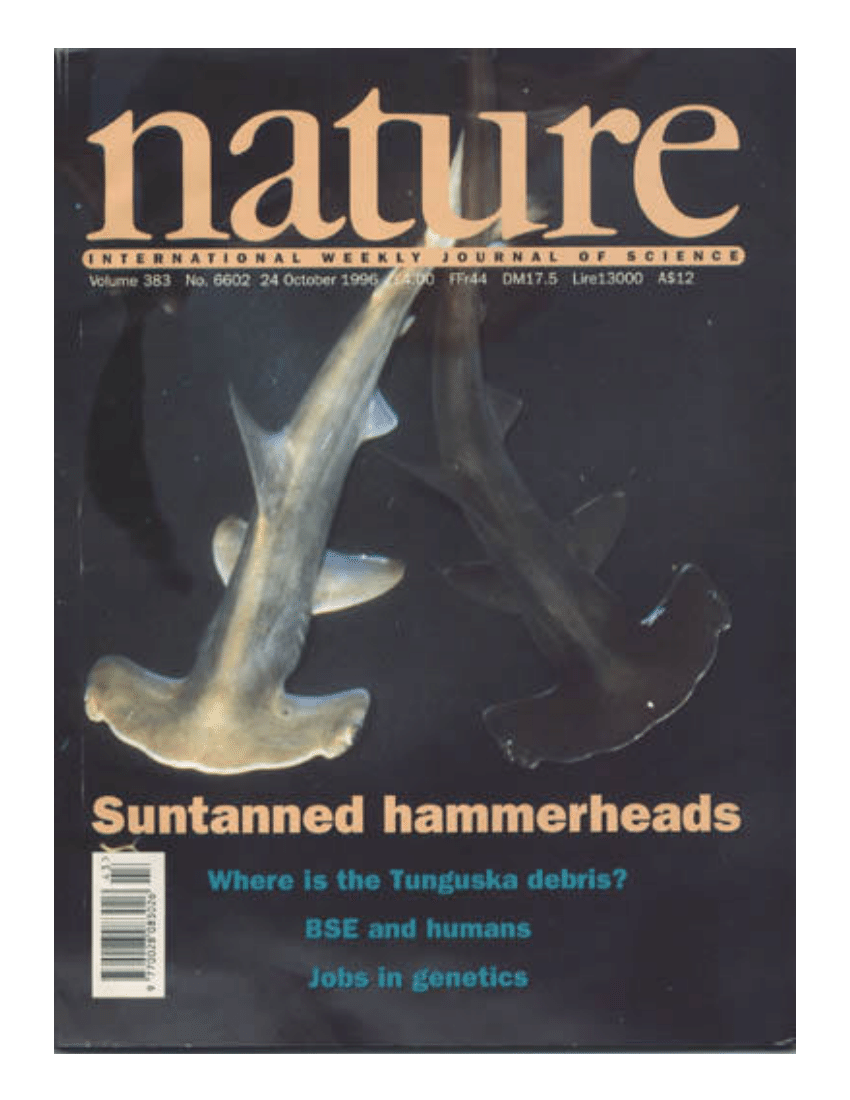Suntanning in Sharks
Juvenile scalloped hammerhead sharks, which are typically light tan in color, were found to suntan when exposed to increases in solar radiation (Fig. 1). These sharks spend most of their time in the deeper, murkier portions of Kāneʻohe Bay, where little sunlight penetrates. However, hammerhead shark pups held in a shallow seawater pond at the Hawaiʻi Institute of Marine Biology subsequently darkened after being in the clear waters of this pond for several weeks, where UV levels are 600 times greater than those at the murky bay floor (Fig. 2). To determine whether sharks were darkening in response to increases in solar radiation, an opaque filter was placed over part of the pectoral fin of untanned sharks that were collected from the bay. Sharks were then placed in the pond for 21 days after which time the filters were removed.


Areas of skin from under the opaque filter were untanned, whereas all other skin exposed to direct sunlight was considerably darker, resulting in distinct tan lines (Fig. 3)

Our experiments demonstrated that the sharks were truly suntanning and that the response was, in fact, induced by the increase in solar radiation, particularly UV. These sharks increased the melanin content in their skin by 14% over 21 days, and up to 28% over 215 days. This study represents the first documented case of suntanning in lower vertebrates (Fig. 4). To our knowledge, the only other animals that have been documented to suntan are a few mammals (including humans!).

Because the pups may use the murky waters of the bay as a refuge to avoid being eaten by adults, it is most likely that this suntanning ability better serves them after they leave the bay. As adults, hammerhead sharks spend more time in clear pelagic waters where UV penetrates to much deeper depths.
Other species of elasmobranch have shown comparable changes in pigmentation after long-term exposure to direct sunlight; however, suntanning has not be directly confirmed.





